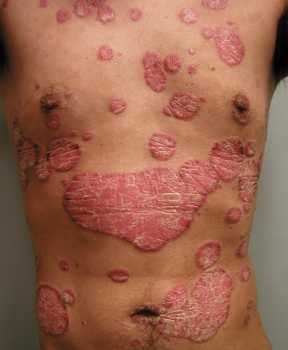
28 Apr Psoriasis: Monoclonal Antibody Bimekizumab vs Secukinumab: Faster, More Complete Clearing
MedicalResearch.com Interview with:

Prof. Reich
Prof. Kristian Reich, MD, PhD
Professor for Translational Research in Inflammatory Skin Diseases
Institute for Health Services Research in Dermatology and Nursing
University Medical Center Hamburg-Eppendorf
MedicalResearch.com: What is the background for this study? What are the main findings?
Response: Complete skin clearance is an important treatment goal for patients with psoriasis and is closely associated with treatment satisfaction and improved quality of life. However, it remains an unmet need for many patients.
The interleukin (IL)-17 isoforms IL-17A and IL-17F play central roles in psoriasis pathophysiology and are overexpressed in psoriatic tissues. Existing biologic therapies, such as secukinumab, inhibit IL-17A only. However, increasing evidence indicates that IL-17F contributes independently to the pathobiology of plaque psoriasis, and that blocking both IL-17A and IL-17F may lead to more complete suppression of inflammation and superior clinical outcomes, compared with blocking IL‑17A alone.
Bimekizumab is a humanized monoclonal IgG1 antibody that has been designed to selectively inhibit IL-17F in addition to IL-17A.
MedicalResearch.com: What are the main findings? What were the main side effects?
Response: BE RADIANT is a phase 3b, multicenter, randomized, double-blinded clinical trial. A total of 1,005 patients with moderate to severe plaque psoriasis were randomized to bimekizumab or secukinumab. Patients randomized to bimekizumab received bimekizumab every 4 weeks to Week 16, at which point patients were re-randomized to receive bimekizumab either every 4 weeks or every 8 weeks.
The primary endpoint was the rate of complete skin clearance, determined by a 100% reduction from baseline in the Psoriasis Area and Severity Index (PASI 100), at Week 16. The ranked secondary endpoints were PASI 75 (75% reduction from baseline in PASI score) at Week 4, PASI 100 at Week 48 for all randomized patients, and PASI 100 at Week 48 for patients re-randomized to bimekizumab every 4 weeks or every 8 weeks.
The BE RADIANT trial met the primary endpoint and all ranked secondary endpoint. At Week 16 PASI 100 was achieved by 61.7% of bimekizumab-treated versus 48.9% of secukinumab-treated patients (p<0.001). Response to bimekizumab was rapid, with 71.0% of bimekizumab‑treated patients achieving PASI 75 at Week 4, as compared with 47.3% of secukinumab-treated patients (p<0.001). At Week 48, 67.0% of bimekizumab-treated (every 4 or every 8 weeks) versus 46.2% secukinumab-treated patients achieved PASI 100 (p<0.001). Responses with bimekizumab were numerically similar between the two dose groups; PASI 100 was achieved at Week 48 by 73.5% of patients who received bimekizumab every 4 weeks and 66.0% of patients who received bimekizumab every 8 weeks (p<0.001 for both comparisons versus secukinumab).
The safety profile of bimekizumab was in line with secukinumab, and consistent with previous bimekizumab studies. There was an increased incidence of oral candidiasis with bimekizumab compared with secukinumab. 97.2% of these oral candidiasis cases were mild or moderate; none were serious and none led to discontinuation.
MedicalResearch.com: What should readers take away from your report?
Response: BE RADIANT represents the first phase 3 head-to-head study directly comparing the clinical benefit of dual IL-17A and IL-17F inhibition versus inhibition of IL-17A alone, the first head-to-head study versus an IL-17A inhibitor to include a superiority endpoint at Week 16, and is one of the few trials to include complete skin clearance (PASI 100) as the primary endpoint. Onset of response with bimekizumab was faster than with secukinumab, and superior levels of complete skin clearance were observed at Week 16, and through 48 weeks of treatment, thus providing evidence that greater clinical benefit may be gained from the inhibition of both IL-17A and IL-17F compared with IL-17A alone.
MedicalResearch.com: What recommendations do you have for future research as a result of this work?
Response: Longer-term data are required to further confirm the findings reported in this study, and to assess long-term safety. The present report covers the first 48 weeks of the BE RADIANT trial, and the open-label extension period is currently ongoing. This open-label period will assess the long-term efficacy and safety of bimekizumab in plaque psoriasis.
Disclosures: Professor Reich has served as advisor and/or paid speaker for and/or participated in clinical trials sponsored by AbbVie, Affibody, Almirall, Amgen, Avillion, Biogen, Boehringer Ingelheim, Bristol Myers Squibb, Celgene, Centocor, Covagen, Dermira, Eli Lilly, Forward Pharma, Fresenius Medical Care, Galapagos, Galderma, GSK, Janssen, Kyowa Kirin, LEO Pharma, Medac, MSD, Miltenyi Biotec, Novartis, Ocean Pharma, Pfizer, Regeneron, Samsung Bioepis, Sanofi, Sun Pharma, Takeda, UCB Pharma, Valeant/Bausch Health, and Xenoport.
Citation:
Bimekizumab versus Secukinumab in Plaque Psoriasis
Kristian Reich, M.D., Ph.D., Richard B. Warren, M.D., Ph.D., Mark Lebwohl, M.D., Melinda Gooderham, M.D., Bruce Strober, M.D., Ph.D., Richard G. Langley, M.D., Carle Paul, M.D., Ph.D., Dirk De Cuyper, M.D., Veerle Vanvoorden, M.Sc., Cynthia Madden, M.D., Christopher Cioffi, Ph.D., Luke Peterson, M.S., et al.
April 23, 2021 DOI: 10.1056/NEJMoa2102383
[wysija_form id=”3″]
[last-modified]
The information on MedicalResearch.com is provided for educational purposes only, and is in no way intended to diagnose, cure, or treat any medical or other condition. Always seek the advice of your physician or other qualified health and ask your doctor any questions you may have regarding a medical condition. In addition to all other limitations and disclaimers in this agreement, service provider and its third party providers disclaim any liability or loss in connection with the content provided on this website.
Last Updated on April 28, 2021 by Marie Benz MD FAAD
